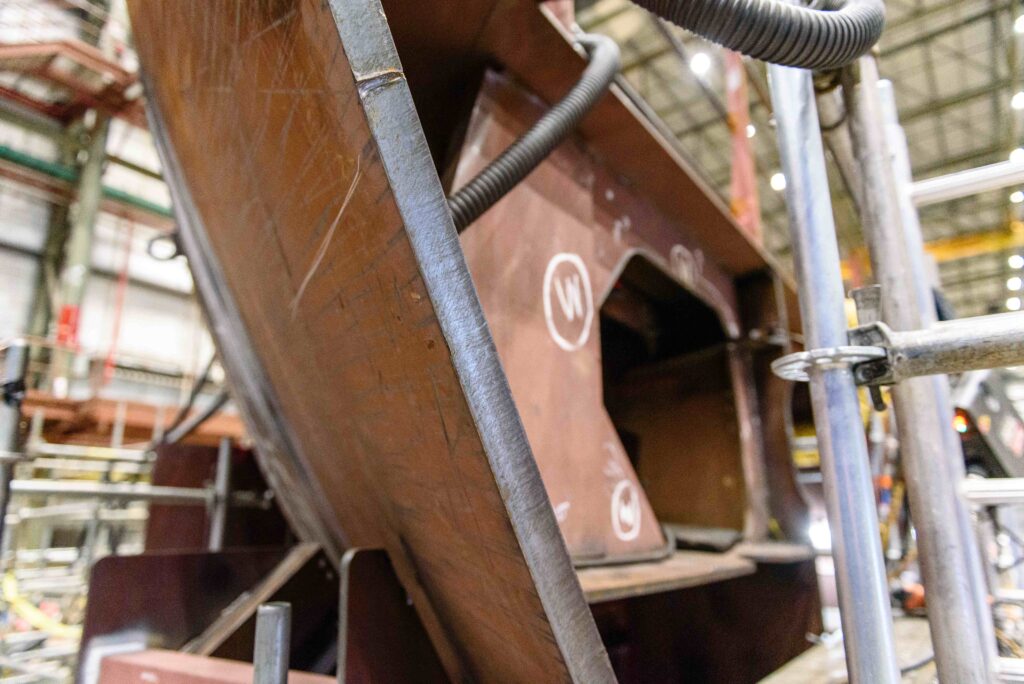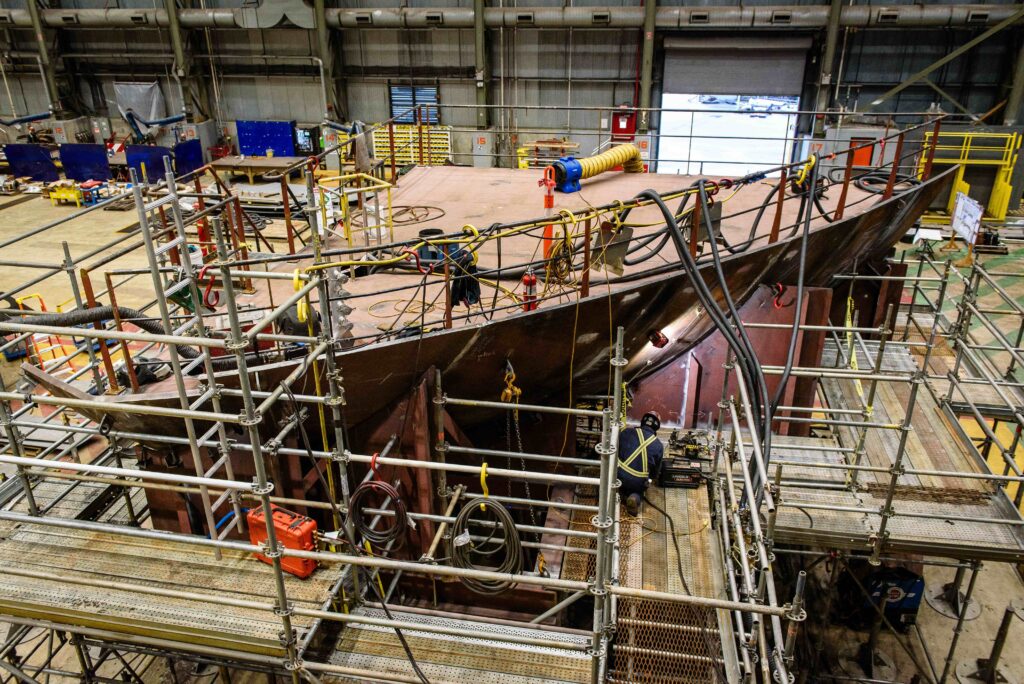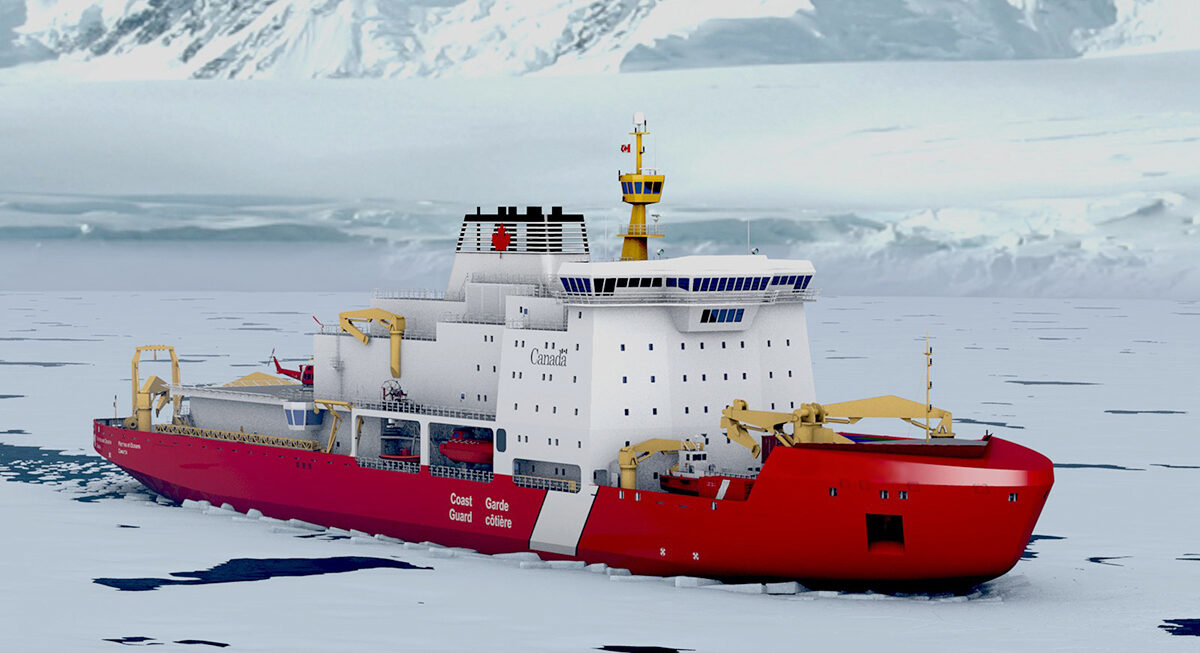Embarking on an ambitious endeavor to bolster its Arctic capabilities, the Canadian Coast Guard has marked a significant milestone in the construction of its polar icebreaker fleet. The latest achievement comes in the form of the prototype block’s completion, a crucial step before the full-scale construction commences.

Seaspan Shipyards, the designated builder for the polar icebreakers, meticulously crafted this prototype block to put to the test the novel processes and tools required for handling the vessel’s specialized steel. This steel, measuring a robust 60 millimeters in thickness, is tailored to navigate safely through the treacherous waters of the Arctic, where ice layers can reach depths of up to 2.5 meters.

A marvel of maritime engineering, Canada’s forthcoming polar icebreakers promise to surpass the icebreaking capabilities of any existing vessel in the Canadian Arctic. With a length stretching to 158 meters and a beam of 28 meters, these vessels boast highly specialized steel alloys and sturdy framing, ensuring resilience in the face of Arctic challenges. Their bow and stern are expertly contoured to optimize performance amidst heavy ice, while the propellers and rudder are fortified to withstand ice impacts, especially in reverse maneuvers. Moreover, the hull’s ample width allows for safe escorting of typical commercial ships.

In terms of autonomy, these icebreakers are designed to venture 30,000 nautical miles without refueling or resupply, capable of enduring several months at sea independently. Additionally, they offer accommodation for up to 100 personnel, with provisions for an additional 25 supernumeraries during surges in operations.
Moreover, equipped with a flight deck and hangar facilities, the vessels are poised to support aerial operations, including Polar helicopter landings and refueling, as well as accommodating two heavy-lift CCG helicopters.
In line with its strategic fleet renewal plan, the Canadian Coast Guard is set to acquire two of these formidable icebreakers. These vessels will enable year-round operations in the Canadian Arctic, playing a pivotal role in governmental missions that span support for Indigenous communities, safeguarding Arctic sovereignty, advancing high Arctic scientific research, and responding to emergencies.
Beyond their operational significance, the construction of these polar icebreakers holds economic importance, projected to generate approximately 300 jobs per vessel at the shipyards and create employment opportunities across the marine supply chain, with an estimated 2,500 jobs in total.

